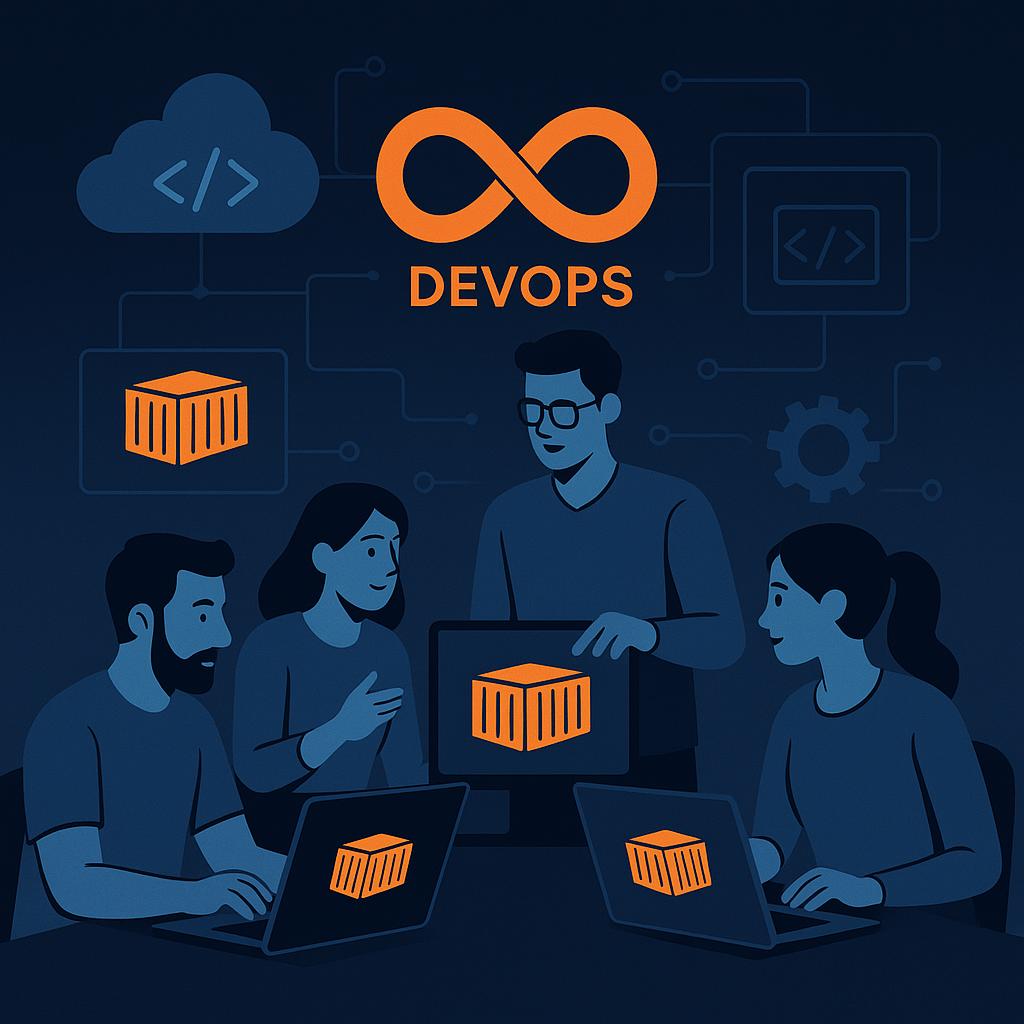DevContainers are quickly becoming essential in modern DevOps because they give teams a fast way to create consistent, reproducible development environments using container technology.
By isolating tools, runtimes, and dependencies within standardized containers, DevContainers help reduce environment drift, speed up onboarding, and make integration with automated workflows more reliable across different platforms.
Understanding DevContainers in Modern DevOps
DevContainers play a crucial role in modern DevOps by eliminating manual environment configuration and reducing setup inconsistencies across teams.
They support infrastructure as code by letting developers define tools, runtimes, and dependencies through configuration files, which can be stored in version control. This approach enables seamless transitions between development, testing, and deployment phases, boosting productivity and minimizing unexpected issues related to environment mismatches.
DevContainers also promote a shift toward more robust, automated development workflows, making it easier to deliver reliable software at speed.
What Are DevContainers?
A DevContainer is a containerized development environment described by a set of configuration files, most notably devcontainer.json.
It packages everything needed to work on a codebase: libraries, tools, extensions, and platform settings. Developers can start coding immediately, regardless of their own operating system, as the DevContainer sets up the environment in a standardized and reproducible way.
This setup greatly reduces errors due to missing or incompatible dependencies and supports both local and remote development scenarios. DevContainers are widely supported by tools such as Visual Studio Code, enabling fast environment provisioning and consistent workflows across teams.
Key Features of DevContainers
Key features include:
- Isolated environments
- Easy onboarding
- Simplified dependency management
DevContainers use templates and features, allowing teams to rapidly build custom setups for different tech stacks or tasks.
Version-controlled configurations mean updates and changes can be shared or reverted quickly. Port forwarding, customizable extension support, and the ability to pre-build images add to flexibility and speed.
Integration with CI/CD pipelines enables automated testing and deployment within the same environments used for development. This results in more reliable application delivery and streamlined DevOps practices.
How DevContainers Streamline DevOps Workflows
DevContainers fundamentally change DevOps workflows by introducing automation and consistency at every phase of the software lifecycle. They leverage container technology to encapsulate not just application code, but also tooling, libraries, and specific configuration needed for development and testing.
This approach reduces manual steps and enables workflows that are repeatable, portable, and predictable, which is essential for maintaining velocity in fast-paced environments.
Consistent Development Environments
Teams using DevContainers standardize development environments using version-controlled configuration files. These files define all the dependencies, extensions, and system settings required for a project.
As a result, every developer works with an identical setup, regardless of their host machine or operating system. This consistency minimizes errors caused by missing software or conflicting versions, and virtually eliminates the “works on my machine” problem.
- Benefits include:
- Reduced setup errors
- Faster onboarding
- Fewer environment-specific bugs
Automated environment provisioning streamlines local setups and ensures that integration and system testing run in an environment mirroring production as closely as possible.
Simplified Onboarding and Collaboration
New contributors can begin productive work quickly, since they no longer need to manually recreate exact development setups. Opening a project with a defined DevContainer automatically installs all dependencies and tools.
This shortens ramp-up time and allows team members to transition between projects or contribute to open source with minimal friction.
- Key advantages:
- Immediate access to necessary tools and libraries
- Seamless transitions between projects
Shared container definitions also make it easier to collaborate across distributed teams, as everyone can use the same set of tools, extensions, and scripts without drift.
Integration with CI/CD Pipelines
DevContainers integrate directly with CI/CD systems, supporting repeatable automated builds and tests. By leveraging the same container configuration for both local development and pipeline execution, teams prevent discrepancies between developer and build server environments.
This alignment reduces failed builds and unforeseen pipeline issues and enables efficient, automated testing and deployment processes. Containerized workflows also make it easier to adopt modern practices such as infrastructure as code and ephemeral build agents.
Implementing DevContainers: Best Practices
Effective use of DevContainers depends on clear configuration, modular setups, and leveraging automation. Adopt a version-controlled workflow for all container configurations, linking them directly with project repositories.
Maintain clarity in container definitions to avoid ambiguity across teams. Document dependencies, extensions, and post-creation commands inside dedicated files, not in ad-hoc scripts.
Update containers regularly to stay aligned with upstream images and recommended dependencies.
Setting Up devcontainer.json
The devcontainer.json file forms the center of any DevContainer setup.
- Define base images, install scripts, environment variables, and VS Code extensions in this file.
- Keep the configuration minimal at first, focusing on one tech stack or workflow at a time.
Use the features property for common tooling and security practices. Always specify any ports that need to be forwarded for development and testing.
Include clear default workspace settings for editor consistency across all users.
Reference documentation or pre-existing templates to reduce manual errors in syntax and structure.
Utilizing Features and Templates
Features offer plug-and-play installation of programming languages, tools, or CLIs, streamlining development container customization.
Leverage:
- Community-driven templates
- Official templates
for rapid environment provisioning.
Modify templates to fit project-specific tools, but keep community standards to enable easier sharing.
Use the Dev Container CLI to discover and apply new features as projects evolve. Ensure each feature’s script is idempotent, so repeated builds stay predictable and clean.
Pre-building Images for Performance
Pre-built images include essential tools and configuration, improving startup speed and reliability.
Set up continuous integration jobs to build and push images to registries. Reference these images in devcontainer.json rather than reconstructing containers on every use.
Pin dependency versions in the build process for consistent results. Always review image metadata to verify it matches current project requirements.
Conclusion
DevContainers optimize DevOps workflows by creating repeatable, isolated development environments that align with automated pipelines. By using containerized configurations, teams streamline setup, improve environment parity, and eliminate drift.
Built-in template and feature support ensures fast provisioning and easier project transitions. Leveraging DevContainers enables scalable collaboration, more reliable testing, and consistent software delivery across all stages of the development lifecycle.
Use https://github.com/modul8dev/modul8_devcontainer as starting point for your devcontainer.

